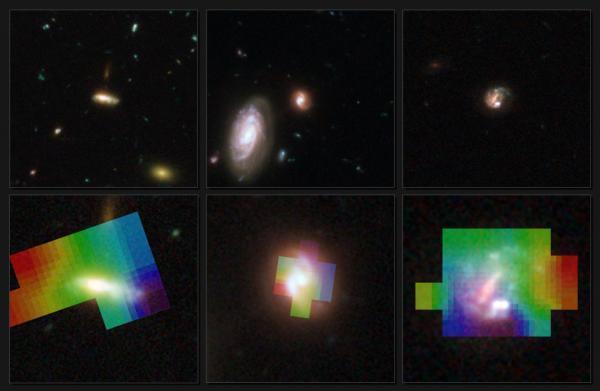Scientists map ''3D book of Universe''
 Munich, March 11 : Using the NASA/ESA Hubble Space Telescope and ESO’s Very Large Telescope (VLT), astronomers have, in a way, prepared a unique “history book” of our Universe, with exceptional 3D views of distant galaxies, seen when the Universe was half its current age.
Munich, March 11 : Using the NASA/ESA Hubble Space Telescope and ESO’s Very Large Telescope (VLT), astronomers have, in a way, prepared a unique “history book” of our Universe, with exceptional 3D views of distant galaxies, seen when the Universe was half its current age.
By looking at this unique “history book” of our Universe, at an epoch when the Sun and the Earth did not yet exist, scientists hope to solve the puzzle of how galaxies formed in the remote past.
With the launch of the Hubble Space Telescope in the early 1990s, astronomers were able to scrutinize the structure of distant galaxies in some detail for the first time.
Under the superb skies of Paranal, the VLT’s FLAMES/GIRAFFE spectrograph, which obtains simultaneous spectra from small areas of extended objects, can now also resolve the motions of the gas in these distant galaxies.
“This unique combination of Hubble and the VLT allows us to model distant galaxies almost as nicely as we can close ones,” said Francois Hammer, who led the team.
“In effect, FLAMES/GIRAFFE now allows us to measure the velocity of the gas at various locations in these objects. This means that we can see how the gas is moving, which provides us with a three-dimensional view of galaxies halfway across the Universe,” he added.
The team has undertaken the Herculean task of reconstituting the history of about one hundred remote galaxies that have been observed with both Hubble and GIRAFFE on the VLT.
The first results are coming in and have already provided useful insights for three galaxies.
In one galaxy, GIRAFFE revealed a region full of ionized gas, that is, hot gas composed of atoms that have been stripped of one or several electrons.
This is normally due to the presence of very hot, young stars.
Another galaxy that the astronomers studied showed the opposite effect. There, they discovered a bluish central region enshrouded in a reddish disc, almost completely hidden by dust.
“The models indicate that gas and stars could be spiraling inwards rapidly,” said Hammer.
Finally, in a third galaxy, the astronomers identified a very unusual, extremely blue, elongated structure - a bar - composed of young, massive stars, rarely observed in nearby galaxies.
According to Mathieu Puech, lead author of one of the papers reporting this study, “The unique combination of Hubble and FLAMES/GIRAFFE at the VLT makes it possible to model distant galaxies in great detail, and reach a consensus on the crucial role of galaxy collisions for the formation of stars in a remote past.” (ANI)